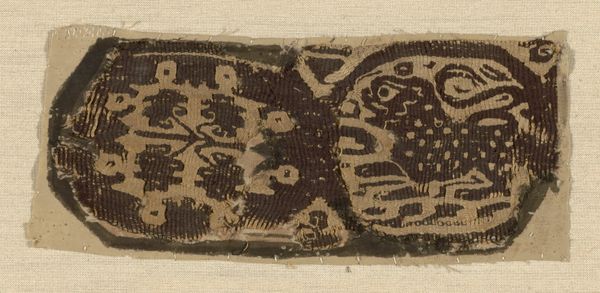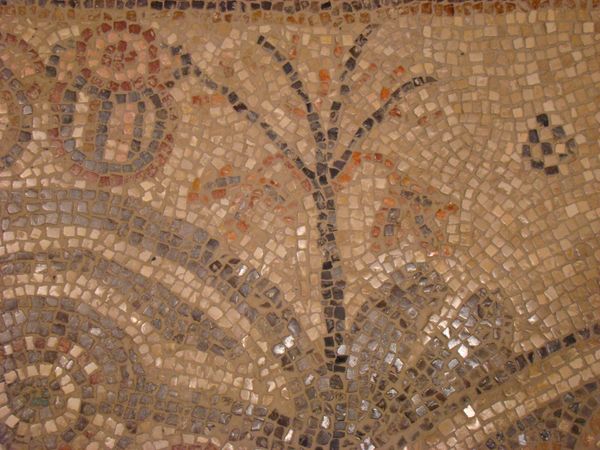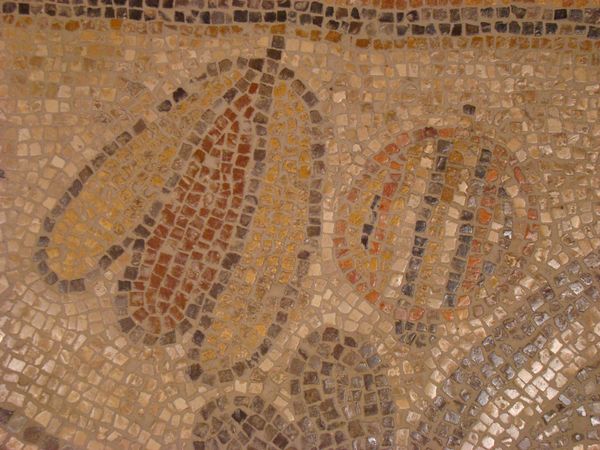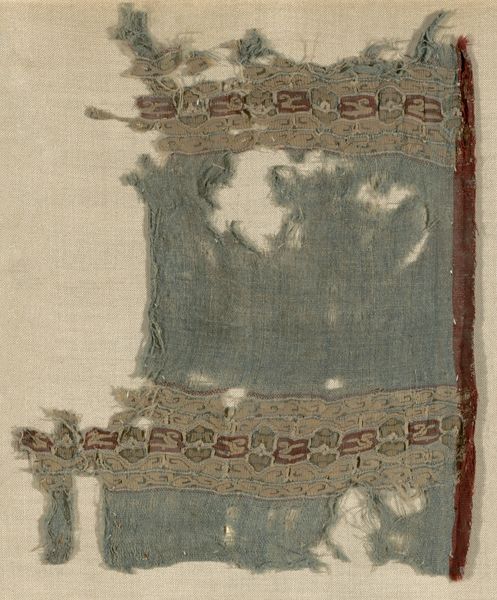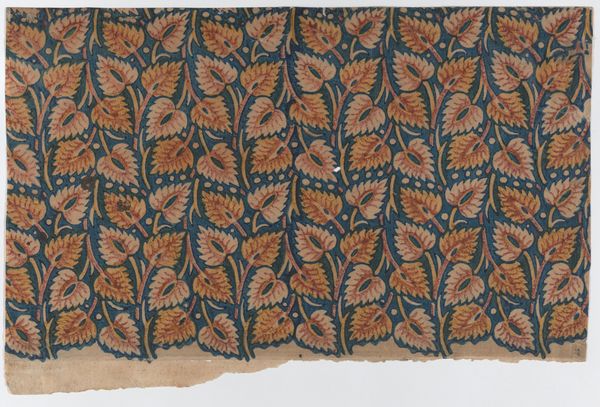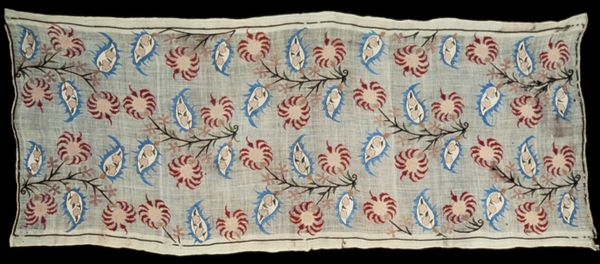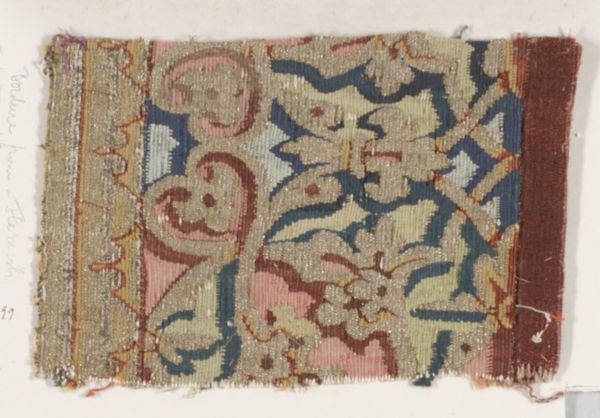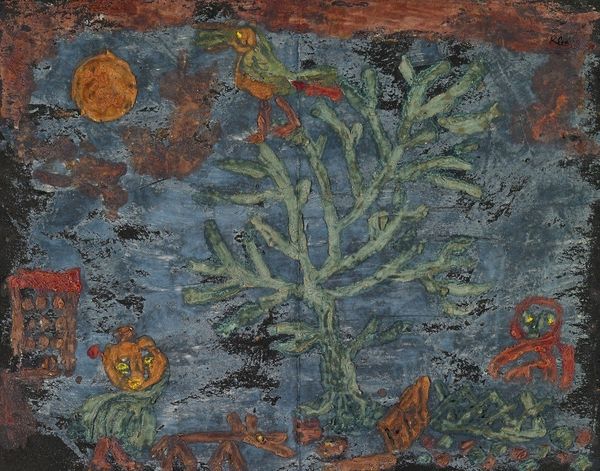
Central Intrados, Decoration with Flowers and Fruits Busting out from a Rush Basket, Mausoleum of Galla Placidia 425
0:00
0:00
byzantinemosaics
Mausoleum of Galla Placidia, Ravenna, Italy
mosaic
#
mosaic
#
byzantine-art
#
geometric
Copyright: Public domain
This is a section of a mosaic made by Byzantine artists for the Mausoleum of Galla Placidia in Ravenna. The image captures a still life, flowers and fruits bursting from a rush basket. The artist uses tesserae to create texture. Observe how the semi-circular shape of the basket contains the organic abundance, forming an arch-like structure. Through contrasting colours, the artists create an interplay between the natural and the constructed, the wild and the contained. We may see how the mosaic medium—small pieces forming a larger image—mirrors the philosophical idea of unity from diversity, a concept central to both classical and early Christian thought. Notice that the structure imposes a sense of order and enclosure over the natural objects depicted, which become part of a broader artistic, cultural, and philosophical context. The mosaic’s form—its use of tesserae to build an image—affects not only its aesthetic qualities but also its conceptual depth. It invites ongoing interpretation, bridging the gap between what is seen and what it signifies.
Comments
No comments
Be the first to comment and join the conversation on the ultimate creative platform.


